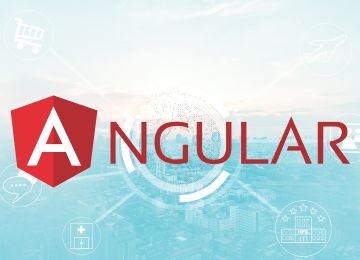
UI Development online training in Hyderabad India
UI development, or User Interface development, refers to the process of designing and creating the visual elements of a software application that users interact with. It involves creating layouts, designing components, and implementing interactions to ensure a seamless and intuitive user experience. UI development encompasses various aspects, including graphic design, typography, color theory, and usability principles.
SNS Tech Academy offers comprehensive UI Development online training in Hyderabad, India, aimed at individuals eager to master the art of creating captivating user interfaces for software applications. The training program covers a wide array of UI development concepts, including HTML, CSS, JavaScript, responsive design, UI frameworks, and modern front-end development tools. Participants engage in hands-on projects, real-world case studies, and personalized mentoring sessions, gaining practical experience in building dynamic and visually appealing user interfaces. Whether aspiring web developers, UI designers, or IT professionals looking to enhance their skills, learners receive expert guidance and certification preparation to excel in today's competitive tech industry. SNS Tech Academy's UI Development online training equips individuals with the knowledge and expertise needed to create compelling user experiences that drive user engagement and business success.
UI Development Online Training course content :-
HTML
- Introduction to HTML
- Basic Tags
- Adding Headings, Paragraphs and Breaks
- Adding Lists
- Links within a page
- Link paths explained
- Introduction to HTML
- Adding Images
- Adding an image to your page
- Making an image into a link
- Aligning text with images Adding the “alt” attribute to your image Creating
- Links
- Linking pages to each other
- Adding E-Mail Links
- HTML Frames
- HTML Tables
- Form Designing
- Marquees
- Search Engine Friendliness
- Adding Titles
- Adding META-Descriptions
- Adding META-keywords
- Introduction to css
- What is css
- Types of css
- What is inline css
- Discuss inline css
- What is internal css
- Discuss internal css
- Discuss about properties
- Types of selector
- Difference b/w class selector and id selector
- What is div
- Template creation with divs
- Difference b/w div and span
- External css
- Introduction JavaScript
- What is JavaScript
- What is statement
- Types of statements
- What is variable
- Variable declaration
- What is an operator
- Types of operators
- Discuss operators theoretically and practically
- Conditional statements
- Introduction to loops
- For loop examples
- While loop examples
- Difference b/w while and dowhile loops
- functions
- Parameterized functions
- Non-parameterized functions
- Recursive functions
- Difference b/w parameterized and non-parameterized functions
- Math calculations using functions
- Math calculations using functions and forms
- Introduction to objects
- What is property and method
- String object
- Math object
- Navigator object
- screen object
- Date object
- Array object
- Introduction to HTMLDOM
- Document object
- Window object
- Discuss dropdown menu practically
- Discuss navigation menu practically
- Ajax
- Introduction to Ajax
- What is XMLHTTPRequest object?
- Ajax properties
- Ajax methods
- Ajax event handler
- Bootstrap Grids
- BS Grid System
- BS Stacked/Horizontal
- BS Grid Small
- BS Grid Medium
- BS Grid Large
- BS Grid Examples
- Bootstrap Case
- Case Container
- Case Jumbotron
- Case Button/Icon
- Case Multicolumn
- Case Menu
- Case Navigation Bar
- Bootstrap CSS
- CSS Typography
- CSS Buttons
- CSS Forms
- CSS Helpers
- CSS Images
- CSS Tables
- Bootstrap Comps
- Glyphicons
- DropdownsNavs
- Introduction of jquery
- Introduction
- features of jquery
- syntax of jquery
- how to write jquery program
- Features of Jquery
- jquery selectors
- Introduction
- Discussing about jquery selectors
- Introduction to Jquery filters
- Discussing about all jquery filters theoretically and practically
- jquery selector manipulation
- Attribute manipulation
- css manipulation
- Discussing about css()
- Discussing about all css methods
- jquery functions and events
- Helper functions
- Bind()
- Unbind()
- jquery effects and animations
- Discussing about effects
- Discussing about animations
- htmldom traversal
- Inserting content(all methods)
- Jquery rotator with program explanation
- Jqueryui
- Introduction
- Interactions
- Widgets
- Effects
- Utilities
- Jquery rotator with simple code
- Jquery rotator without code
- Simple Jquery slider
- Jquerysliderhorizental
- Jqueryslidevertical
- Jquery slider with pager
- Jquery 3d slider
- Jqueryshuffle
- Jqueryzoom
- Popupwindow
- Cloudzoom
- Jquery form validation
- Jquery form validation using plugin
- About This Course
- Prologue
- Description
- Rationale
- Objectives
- Entry Profile
- Exit Profile
- Conventions
- Chapter 1 - Getting Started with HTML
- Introducing HTML
- Creating an HTML Web Page
- Text Editor
- Graphic Editor
- Identifying the Basic Structure of an HTML Page
- Exploring the HEAD Tag
- Exploring the BODY Tag
- Practice Questions
- Summary
- Chapter 2 - Enhancing Web Pages
- Working with Styles
- Identifying the Syntax of CSS
- Identifying the Types of Style Sheets
- Applying Multiple Style Sheets
- Identifying CSS Selectors
- Styling HTML Elements
- Grouping and Nesting Styles
- Controlling the Visibility of Elements
- Positioning HTML Elements
- Applying Transitions, Animations, and Transformations
- Applying Transitions
- Applying Animations
- Applying Transformations
- Practice Questions
- Summary
- Chapter 3 - Working with Tables and Frames
- Creating Tables
- Identifying the Basic Structure of a Table
- Enhancing Tables
- Accessing Multiple Web Pages Using Frames
- Creating Web Pages Using Frames
- Styling Frames
- Practice Questions
- Summary
- Chapter 4 - Adding Interactivity to Web Pages
- Understanding Scripting
- Types of Scripting
- Identifying the Benefits of JavaScript
- Implementing JavaScript in Web Pages
- Embedding a Script into a Web Page
- Creating and Using an External File
- Identifying Rules and Conventions Used in JavaScript
- Using Variables, Operators, and Control Structures
- Defining Variables
- Using Operators
- Using Conditional Constructs
- Using Loop Constructs
- Break and Continue Statements
- Implementing Functions
- Introducing Functions
- Creating Functions
- Accessing Functions
- Practice Questions
- Summary
- Chapter 5 - Creating Dynamic Web Pages
- Designing an HTML Form
- Creating Forms
- Exploring Form Elements
- Manipulating the Components of a Web Page
- Working with Browser Objects
- Working with Form Objects
- Practice Questions
- Summary
- Chapter 6 - Working with Graphics
- Introducing Canvas
- Creating a Canvas
- Working with Color, Shapes, and Styles
- Working with Path, Text, and Images
- Transforming and Animating Canvas Elements
- Transforming Canvas Elements
- Animating Canvas Elements
- Practice Questions
- Summary
- Solutions to Practice Questions

















